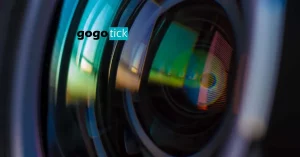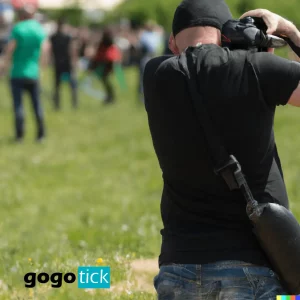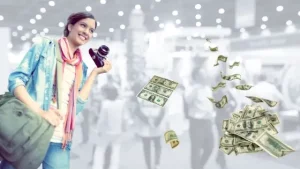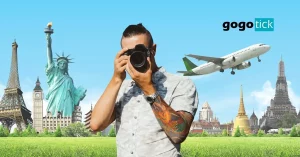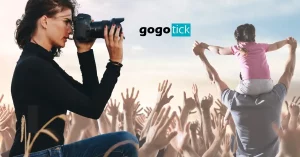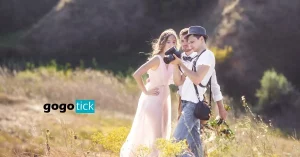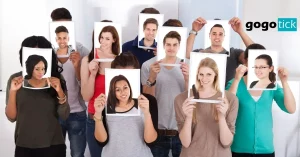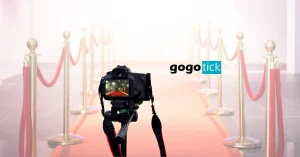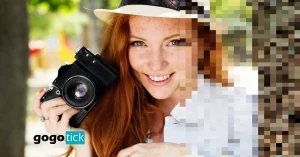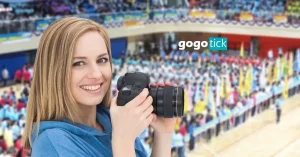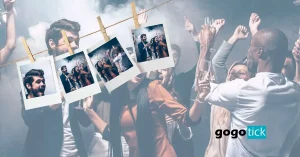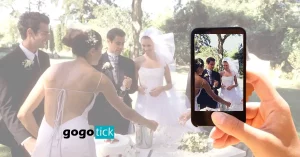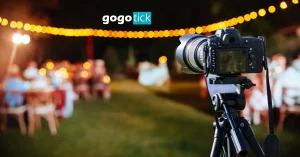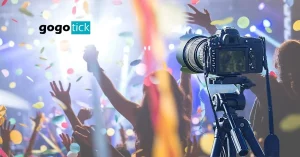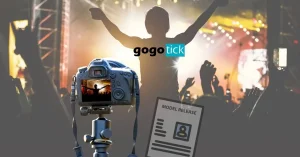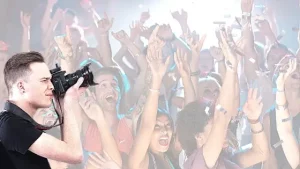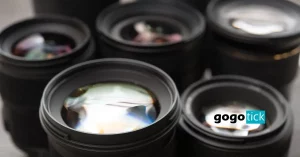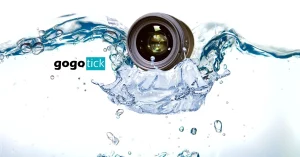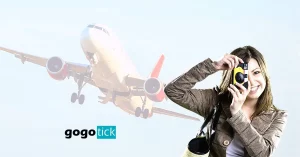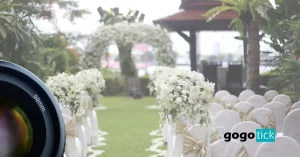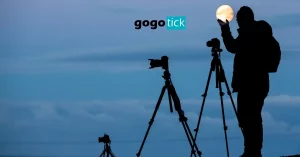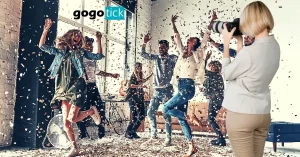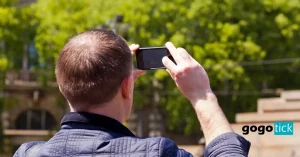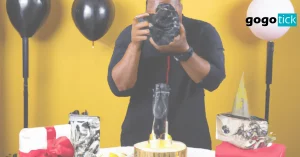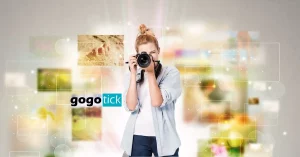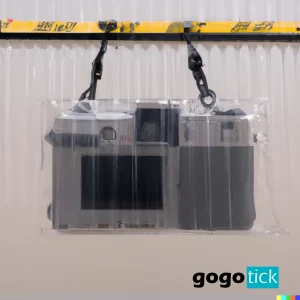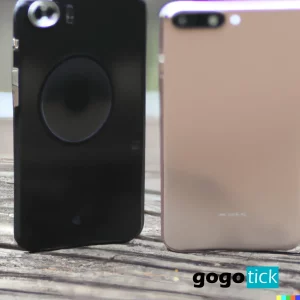Event photography does not provide ample opportunity for mishaps or mistakes. Forgotten gear, mismanaged time, faulty hardware, or even general distraction can end up ruining what could be the most important moments of the client’s life. That is why it is essential for event photographers to be as prepared as possible, within reason, and make sure that they can always capture the best moments possible.
So, what do you need for event photography? To operate well, you will need:
- Cameras
- Lenses
- Memory cards
- Flash & Lighting Equipment
- Laptop
- Camera bag & straps
- Gaff tape
- Backups
- Business Cards
- Earplugs
- Lens cleaning kit
The scope of work in event photography is wide, and it is impossible to account for every situation. Remember that as you go through your work and this list, and adjust your gear accordingly. If, for instance, many of the events being shot are on top of a mountain, you probably need to bring more gear than someone shooting a run of the mill business conference.
Still, there are some pieces of gear that are essential across all setups that any creative event photographer could find a use for. Here are 15 of them.
What Do You Need For Event Photography?
The question of what is actually needed for event photography can inspire some debate. Some, especially those who are not used to the business of event photography, may argue that you only need a phone with camera capabilities. Of course, this will not result in the best photos possible and clients will most likely be unwilling to pay for such things.
Ultimately, what you need for event photography is whatever allows you to grab the most important shots of the event. Due to the wide range of areas, people, settings, and expectations at events, most often this means bringing a fairly comprehensive set of gear that allows you to capture everything.
The basics will always include a camera, a lens, and memory cards. That is the bread and butter of any photographer, although the exact lenses may change for event photography. Some of the other objects that will appear on this list, such as small lighting equipment, are hacks and tricks that event photographers must use in order to produce high-quality shots in the field.
Events themselves also differ greatly, as well. Shooting a wedding and shooting a business conference will end up using the same basic principles and ideas, but the methodology and goals of each event vary wildly. All of this is to say that you cannot be too prepared for shooting any event.
When determining how much gear to bring, follow these simple guidelines:
- Be able to move freely and comfortably while strapped with your gear
- Do not draw attention away from the event and toward yourself
- Consider the storage facilities available to you at the event
Maximize your time, space, and capability to ensure you get hired again and are ready to photograph any event.
- Cameras
The first thing you absolutely need for event photography is obvious: a camera!
If you are shooting event photography professionally, be sure to invest in the camera body. It is important that you know the camera well and can adjust settings on the fly, as things tend to happen quickly.
The camera body is arguably the most important piece of gear you will bring to an event, so be sure to invest in it properly. This means buying the best you can afford, taking the time to learn the camera’s idiosyncrasies and special modes, and being confident that it will help you get the best shots available.
It is often a good idea, especially for large events, to bring multiple camera bodies. Two should be enough. This will let you keep one lens on a main camera body that will do most of the work, while allowing you to keep a separate camera body attached with a special lens at the ready. This is great for switching to a faraway moment so that you do not waste time and possibly miss the shot while switching lenses.
- Zoom Lens
Zoom lenses are likely to be the most used glass you bring to any event. They can vary widely in size, but for a good starting point try to grab one that can switch between 24-70mm. This will allow you to shoot portraits, group photos, area shots, and much more with relative ease.
Once again due to how quickly moments happen at events, it is important to invest in your gear. Try to grab the highest quality zoom lens you can afford, and that includes making sure it is a quick lens that can let in a lot of light.
Having multiple zoom lenses is also a great idea, especially for any events where you will need to capture moments from a distance or while staying out of the way. Times like this include capturing the wedding ceremony, special speakers at a conference, or candid shots of attendees. A telephoto lens is perfect for many of these moments, and a good focal length to shoot for is 70-200mm.
If you have multiple camera bodies (and you should!), a good tip is to leave your medium zoom lens on one and switch out the lenses on the other body as necessary.
- Prime Lens
A prime lens is a lens that has a fixed focal length. Depending on the type of event you are shooting, this will be used just as often as the zoom lens.
The most recommended prime lens length for shooting events is 50mm. At this length, the lens is perfect for capturing close-ups, small group photos, portraits, and general setting shots.
While less versatile than a zoom lens, a high-quality prime lens is simply irreplaceable at any event with poor lighting or lots of portraits. Most prime lenses are quicker than zoom lenses and let in more light to deal with the worse conditions that often plague events.
In addition, prime lenses are great for adding depth of field to photos. While some clients who hire you for event photography may not care about getting more artistic photos, it is always nice to inject quality into your work and provide unique experiences.
Especially for events such as weddings or baby showers, people will look back at the photos and want to have fond memories. Depth of field helps tremendously with making shots feel wonderful and almost dreamlike.
- Macro Lens
A macro lens is made for capturing all the details at an event. Shots of jewelry, table settings, apparel, any all other small things. Your macro lens will be used less than your other lenses, so keeping it in the camera bag most of the time is expected. Still, being able to capture the details and care that went into an event is always important.
You should use the macro lens during slow times in the event, where you can afford to not miss much and take detailed, close shots of various things.
A good focal length for a macro lens is 100mm, or 120mm. While this is the least important lens for shooting events, it is still vital to take time and get used to shooting with it.
This lens is especially important for wedding events, where shots of the rings, details on the dresses and suits, and fine artistry of the wedding cake will all be appreciated.
- Flash And Lighting Equipment
While on the go at an event, finding good lighting is always one of the hardest tasks the photographer has to overcome. Sadly, not all venues and locations are suited for high-quality photos. To remedy this, any event photographer needs to have small, easily accessible lighting equipment in their bag.
A speedlight flash, LED light, or flashcube are the most common ways to remedy the lighting problem. While the built-in flash of your camera can sometimes do the trick, introducing multiple light sources into a photo is more likely to result in a high-quality product.
Other small pieces of gear that could help the lighting situation include small bounce cards and diffusers to soften the light. These quickly become essential if the external flash is very bright, as you do not want to make people uncomfortable or ghost them out in photos.
Be aware of how the event and your client feels about using flash. Some events will never allow flash to be used in photos, while others may allow it during certain periods or all the time. Communication with your client early on can help ensure that everyone is happy and that you can adjust your equipment accordingly.
- High-Quality Memory Cards
Memory cards are an often overlooked part of photography but a fair amount of choice can enter into them. It is important to bring multiple, large capacity memory cards to any event. Go through them before the event and ensure that they are wiped clean and formatted properly for your camera to avoid any overlap and mixing of photos.
It is easy to simply go online and order the cheapest memory cards you can find. Truthfully, this may work wonderfully for you for normal photography, but events can often be held in areas with conditions that are poor for electronic equipment. The absolute last thing you want to happen while shooting an event is for your memory cards to fail.
If you are shooting outdoors often, such as during concerts, sporting events, parades, outdoor weddings, etc. there is a strong chance that you will run into inclement weather. To ensure that your memory cards endure through these conditions, be sure to grab ones that are from trusted brands. Many memory cards are available that are also dustproof and waterproof to ensure even stronger protection.
- A Laptop
A laptop with installed editing software can do wonders for your event photography workflow. You want to be sure that a laptop you are using for event photography is lightweight, stable, has a long battery life, and is capable of running photo editing software.
Bringing a laptop to an event comes with many boons. One of the main ones is being able to edit photos at the event, improving your turn around time and ensuring that clients are happy. More and more often, clients expect their photographs either at the end of the event or, at the slowest, 24 hours after the fact.
During lulls in the action at an event, you can find a corner and start quickly touching up photos and applying edits.
In addition, laptops are fantastic for charging devices, offloading images, and finding information on possible technical problems.
- External SSD or USB Drive
An external SSD or USB drive is great for expanding your storage capabilities while shooting at an event. If an event is a few days long, such as festival or long sporting event, bringing along plenty of external storage is essential. Even when that is not the case, this external storage can be used to back-up photos and provide peace of mind.
You want to make sure that any external storage you bring is durable and can be moved around, as you will rarely sit still while shooting an event. Toward this end, be sure to bring an external SSD, not HDD, so that movement will not possibly harm the photos inside. Modern technology makes these storage devices much more common and cheaper, thankfully.
Having extra storage is never a bad thing, and peace of mind for both yourself and clients is an often overlooked part of the job. Taking the time either directly after the event or during to backup photos to a secondary location will let you focus more on getting the perfect shots.
USB drive storage is useful for many of the same reasons, but includes another great benefit; These can be loaded up with the finished photos and handed off to a client directly. They are cheap and easy to buy in bulk, allowing you to simply bring some on hand to every event. If you have time to edit photos during the event, you can finish them off and provide stellar service.
- Gaff Tape
Gaff tape is incredible for its wide range of uses with photography. While you will never find any movie set or photography studio without a hefty amount of gaff tape on hand, new event photographers may forget to pack a roll.
Gaff tape is a form of tape that is commonly used for just about anything around sets. These can be used to fix broken camera straps, tape down wires, black-out distracting logos, tape down a broken piece of gear; the list is truly endless.
One of the biggest benefits of gaff tape over alternatives such as duct tape is that it leaves behind no mess. Once you pull off the gaff tape, it will look like nothing was there. This is vital for shooting events, as you do not want to leave a mess or seem unprofessional.
Gaff tape is used for fixing problems as they arise. If you are creative in thinking of uses for it, you will find them just about anywhere.
For event photography, you can buy small rolls that slide easily into a variety of storage. This way, you do not need to pull out an enormous roll every time you want to use it – although the big roll is probably worth picking up, too.
- A Camara Bag and Other Small Storage
A solid camera bag is an obvious essential, but one that often does not get the attention it deserves. For a bag that is often holding thousands of dollars of gear, you want to make sure it will not break or come apart easily. Take the extra time before an event to make sure your camera bag is large enough to fit all your gear, comfortable to wear, fits your style, and is high-quality.
Other storage solutions are great to have, as well. If you prefer a small camera bag that simply stores one camera body and one lens, you can invest in a backpack with lots of other small storage to organize things like gaff tape, memory cards, and your laptop.
It is vital that your bags are organized so that you can find what you are looking for quickly. Events move quickly, and if you need to dig through your camera bag to find your next memory card, you likely already lost the shot you were looking for.
As time goes on and you shoot more events, you will develop a system that works best for you. When you are just getting started organizing your gear, here are a few tips:
- Organize small, easy to lose pieces of gear into individual bags
- Keep heavy gear like laptops and large lenses close to your body
- Use internal straps to keep things like pens and gaff tape from falling to the bottom of the bag
The better your storage is, the easier you can access your gear and take the best shots. In addition, your gear is less likely to get damaged if you invest in storage. Taking a cheap camera bag to an outdoor wedding where a sudden thunderstorm hits is a good way to damage expensive equipment.
- Comfortable Camera Straps
A comfortable camera strap is something that an event photographer will only forget once. Shooting an event without a strap, or with a strap that causes pain or irritation, will almost always lead to a terrible situation that you do not want to repeat.
Comfortable camera straps allow you to free your hands when necessary, can provide space for two camera bodies, and can often match with any outfit. At its core, a good camera strap provides significantly more utility to the photographer.
Camera straps are available in a variety of styles, so pick something that matches you and will not look out of place at the main events you shoot. Investing in an “around the back” style is worth it, as this will not cause neck issues and often looks much nicer. Additionally, these tend to have holster straps for an extra camera body or small pieces of gear like memory cards or flashcubes.
Finally, many camera straps include rings that you can introduce other gear onto. This modularity proves incredibly useful while out on a shoot, as you can easily switch from looking sleek and blending in, to packing almost all your gear around your shoulders.
- Backups
Backups of essential gear are just as important to have as the original copies. The chances of you being able to run out to a nearby store and quickly grab some new memory cards, a camera body, flashcube, or any other gear are always going to be slim at any event. Even if you can, it will look unprofessional and may cause clients to not want to hire you again in the future.
Mistakes happen, and gear always has a chance of breaking down. The most important thing to be able to do is to finish shooting the event. This is why gear backups are essential; It is awful if your main camera body breaks, but having the second one there and ready to go ensures that the client will still get what they paid for. You can deal with the broken gear later, on your own time.
Of course, some things are just unfeasible to have a backup of. Lenses are expensive and unwieldy, so having two copies of every lens would be an absurd request. Luckily, you should be packing at least two lenses anyway which can serve as functional backups. If one breaks you may lose out on some shots, but the majority of your work should stay the same.
Pieces of gear that are absolutely essential to have backups of include:
- Memory cards
- A spare camera body
- External flash or LED lights
- Batteries and Chargers
If you are attempting to shoot an event with only one lens, which you should not be doing in the first place, be sure to bring a spare lens as well.
- Business Cards
Business cards are important to have around for any events where other, potential clients could attend. Corporate events, music festivals, parades, and others are great examples of environments where others who could use an event photographer gather.
Be sure to talk with your client and the event organizers and make sure it is alright for you to hand out business cards or contact information. If possible, ask if you can leave a small stack on a back table for people to grab if they are interested.
Even once you have permission to hand out business cards, be sure to do it only when appropriate. If event attendees approach you and ask about you or your work, that is a great time to establish a new connection. Do not just hand out your business cards to every attendee, especially during important parts of the event. No one will want to work with you if you cannot read the room.
You are most likely to establish new connections through handing out business cards at corporate events, as guests from other companies often attend. At events such as these, handing out your business cards toward the end of the event to people you talk to is the best way to get future business. Keep conversation brief, and clue into whether or not your services could be of use to them. If someone seems uninterested, do not push the matter.
Handing out business cards works best when people approach you first. Remember that you are not at the event to network, but to shoot it! Make connections when possible but focus on the job at hand.
- Earplugs
Earplugs can be a great piece of kit for anywhere where there will be loud sounds. For concert photographers, earplugs are absolutely essential to protect their hearing and allow for better positioning. If you want to take a photo near stage speakers, it will be all but impossible to stabilize and focus on the shot without earplugs.
Even if you do not often shoot concerts, bringing along earplugs is always worth it. They are small, cheap, and can be shoved into just about any bag. In case an event has any entertainment, you will be prepared.
- Lens Cleaning Kit and Hoods
A lens cleaning kit, and lens hoods to keep on them while not in use, are vital to capturing clear shots. Especially if the event is outdoors, it is highly likely that your lenses will get dirty. With how quickly event photographers move around the space and shoot photos, you will almost certainly end up dirtying your lens even in the most sterile conditions.
Lens hoods should be placed on your lenses whenever you are not using them to keep them from getting dirty. While this will slow down how quickly you can take shots, it is minimal and worth the time. Cleaning smudges off of a lens almost always takes more time than removing a lens hood.
A kit most often includes a simple solution that can be wiped on the lens with a microfiber cloth. Rain, dirt, smudges, and fingerprints can all ruin what would be a perfect shot, so it is important to keep an eye on the condition of your lenses.

